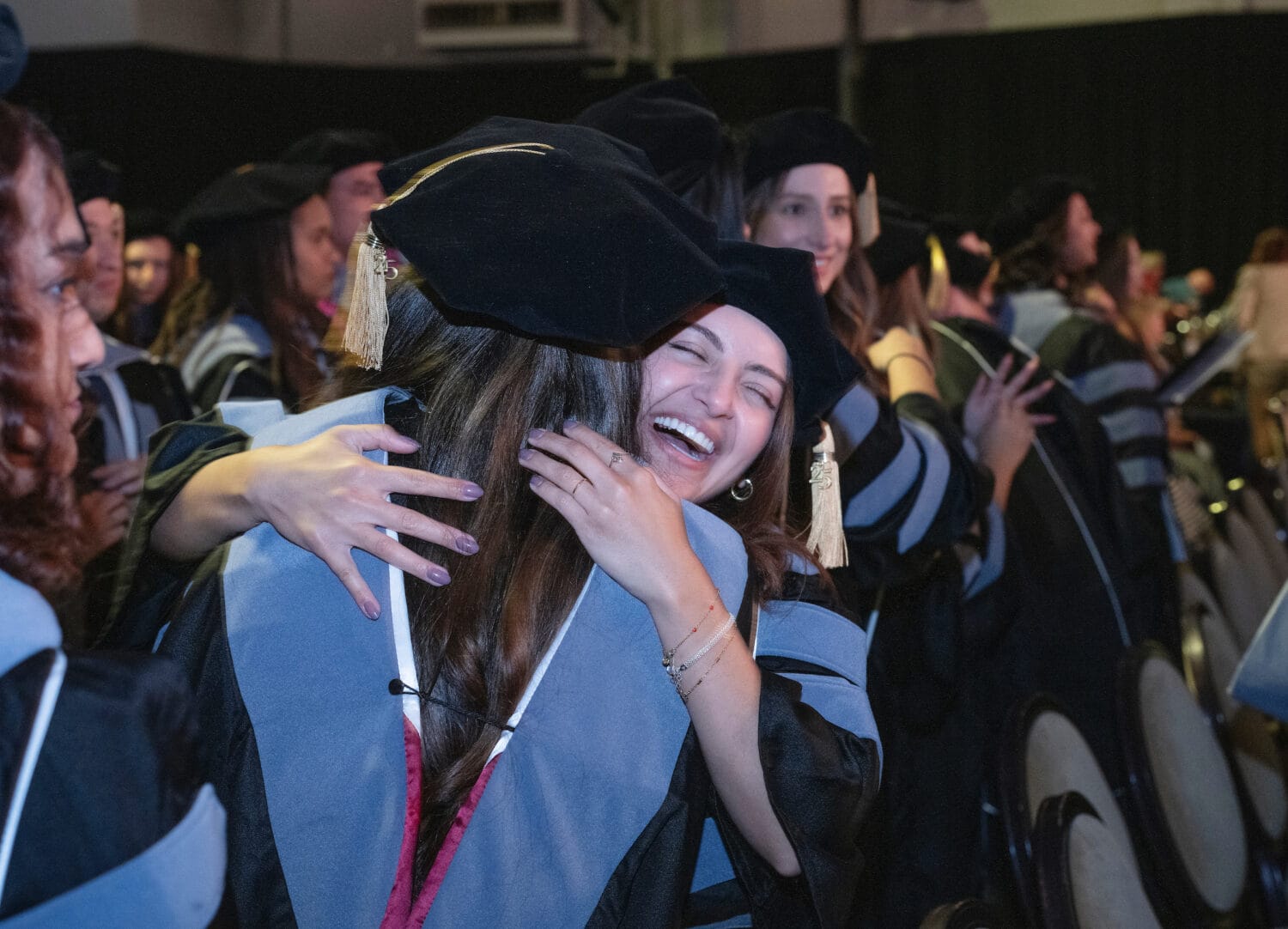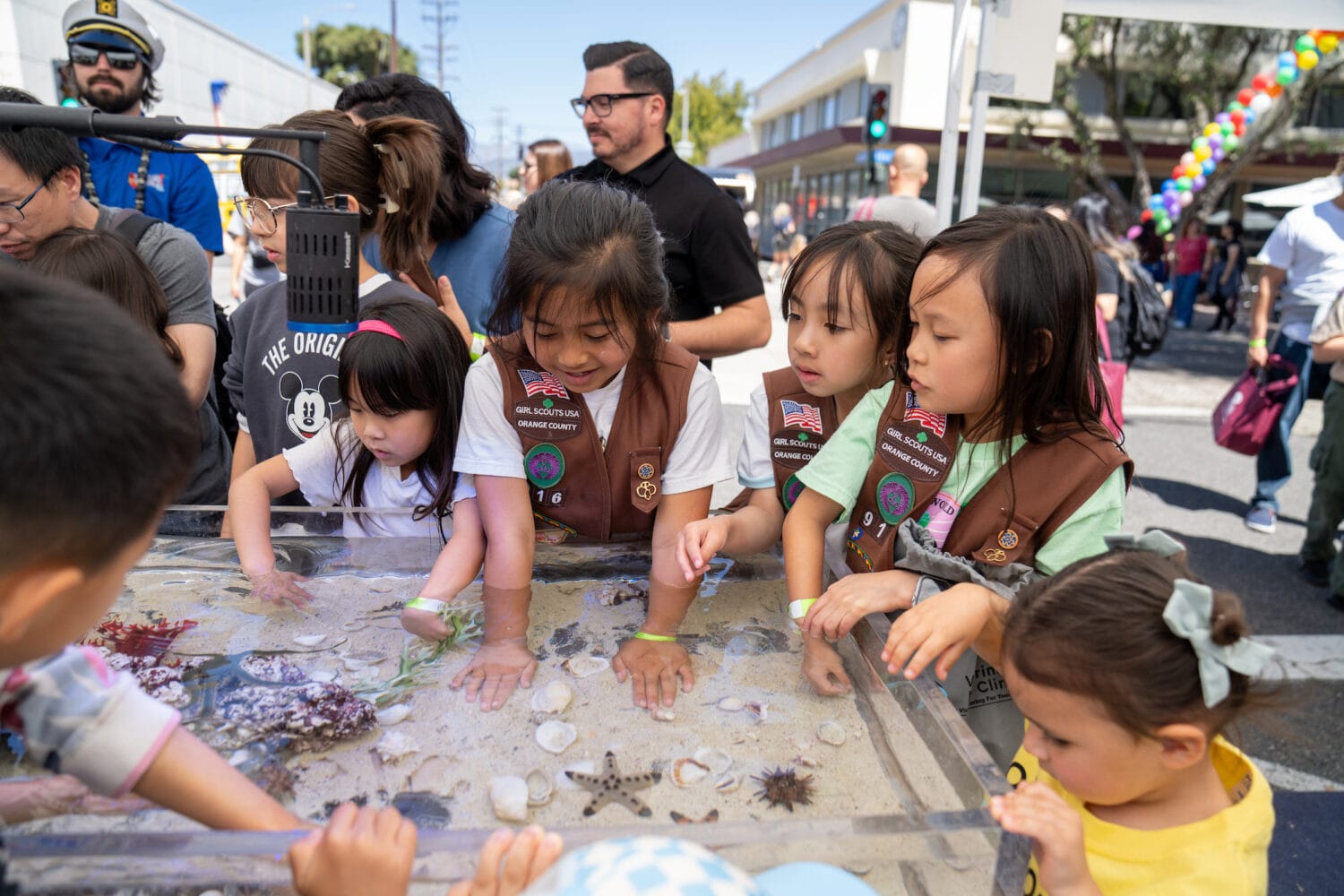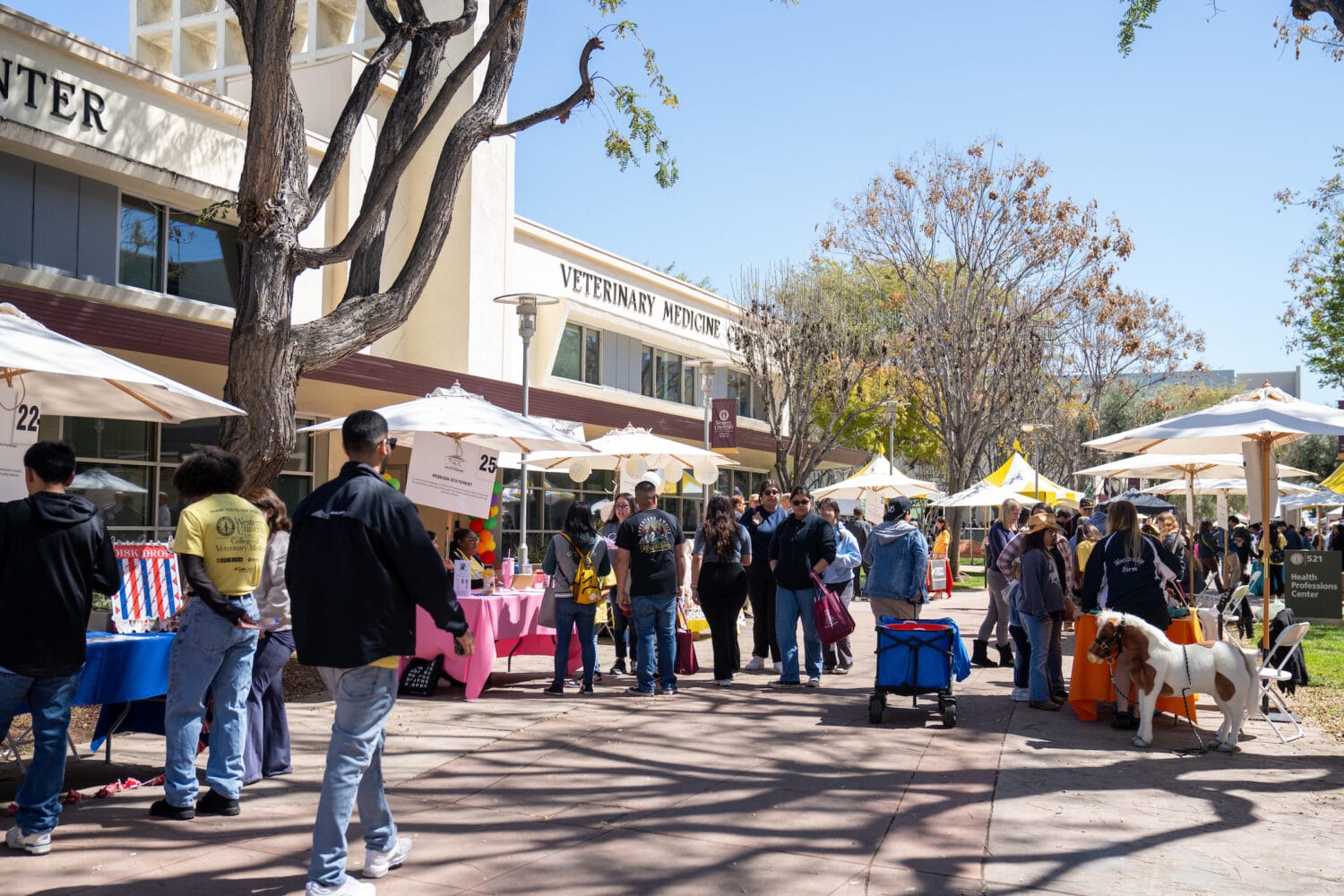WesternU team creates T. rex bone slide for new Dinosaur Hall
A team of Western University of Health Sciences faculty, staff and students created what could be the “”world’s largest microscope slide”” of a Tyrannosaurus rex femur for the recently opened Dinosaur Hall at the Natural History Museum (NHM) of Los Angeles County.
Led by Elizabeth Rega, PhD, WesternU associate professor of anatomy and assistant vice provost for academic development, the team spent about a year and more than 170 hours cutting, mounting and sanding a paper-thin histological cross-section from a T. rex femur.
The team began with a bone that weighed about 130 pounds. At mid-shaft, they cut the bone about three-fourths of an inch thick, in what’s described as looking like a slice of prime rib.
The section, mounted on custom-cut tempered glass and measuring 9 inches by 9 inches, is housed in the new, 14,000-square-foot permanent dinosaur exhibit at NHM.
“”It’s unprecedented to do a section this big,”” said Rega. “”We had to do things very differently than before, and developed new techniques for the cutting, mounting, and the grinding of this enormous section. These are difficult techniques, and the entire team physically worked very hard.””
College of Veterinary Medicine (CVM) anatomy instructor Ken Noriega, third-year CVM students Beth Liebeck and Valerie Cantrell, second-year CVM student Christine DePompeo, College of Osteopathic Medicine of the Pacific-Northwest (COMP-Northwest) faculty assistant Jaime Servin, and COMP graduate Laura Rush, DO ’09, contributed to the effort, along with several others.
In early 2010, Dinosaur Hall exhibit lead curator Luis Chiappe, PhD, contacted Rega, who is an expert in histology and ancient animals, looking to tap into local partners and scientists in Los Angeles’ outlying communities and have them share and invest in the museum’s exhibit.
Rega says Chiappe’s vision was to be able to show the cut bone, then show the entire section because it’s much more dramatic and accessible to the general public.
“”I’m very grateful to Dr. Rega and her team for the collaboration they provided,”” Chiappe said. “”It is a great example of how our local academic institutions are supporting our cultural and educational institutions.””
The exhibit contains the world’s only T. rex growth series, showing specimens from the youngest known baby, a rare juvenile, and a 70 percent-complete young adult known as Thomas the T. rex, according to a museum press release.
The T. rex attached to this bone was at least 25 feet in length when it died. The bone is approximately 65 million to 68 million years old, dating to the late Cretaceous period. It likely comes from the Hell Creek Formation in Montana and portions of North Dakota, South Dakota, and Wyoming, according to Rega.
Five additional histological slides were created from the T. rex femur and will be used for research, Rega said. She described identifying things that look like tree rings on the histological sections, as well as what might be osteoporosis, uncovering what is likely a pathological bone.
“”As a health sciences university, it’s a very interesting section we ended up cutting,”” said Rega. “”We are going to work with the curator at NHM and researchers at UC Berkeley to further describe this for an academic publication.””
The Natural History Museum of Los Angeles County is at 900 Exposition Blvd. Los Angeles, Calif. To plan your visit and for additional information, please visit the NHM “”plan your visit”” website.
Reservations are required for the Dinosaur Hall, which is included in general admission to the museum.



